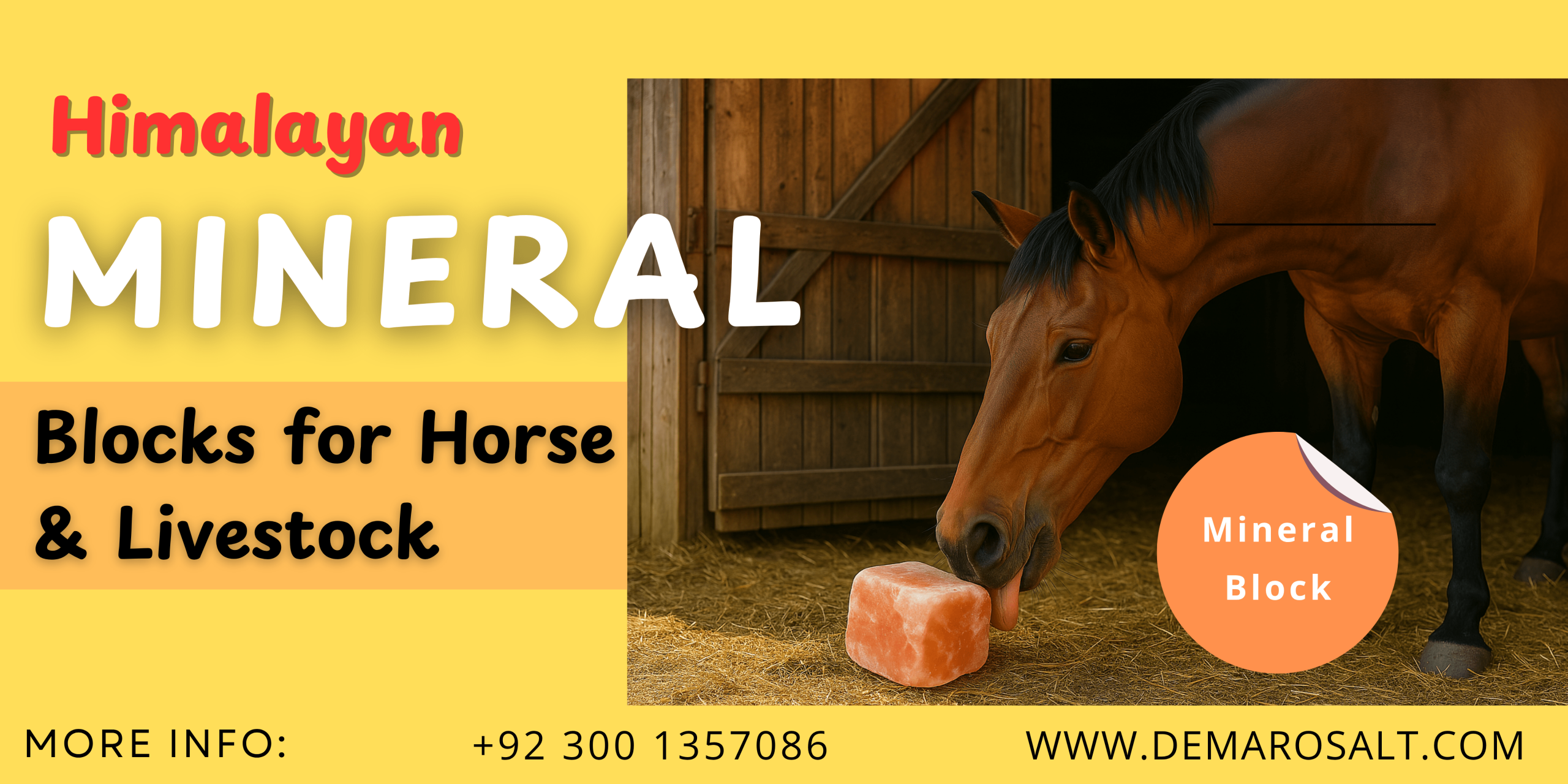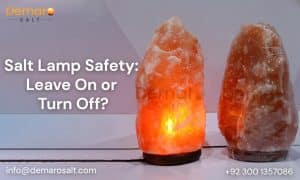Mineral blocks for horses are compressed nutrient-rich supplements that provide essential minerals and trace elements to support equine health. Unlike ordinary salt blocks, these mineral blocks are specifically designed to meet the nutritional requirements of horses—promoting better hydration, bone strength, muscle function, and overall vitality.

Whether you’re managing a competitive stable or maintaining a pasture companion, understanding the role of mineral blocks for horses is vital for equine care.
🧂 What Do Mineral Blocks Contain?
Mineral blocks for horses are typically made of a base of natural salt, with added trace elements that are either naturally occurring (e.g. Himalayan Salt) or scientifically formulated. These include:
- Sodium – Maintains fluid balance and nerve function
- Calcium – Supports bones and teeth
- Magnesium – Important for muscle and nerve function
- Potassium – Helps regulate heart and muscle function
- Zinc, Copper, Iron, and Selenium – Essential trace elements for metabolic processes and immune health
📝 Some mineral blocks also contain added vitamins, molasses, or flavorings to enhance palatability, but natural options like Himalayan Salt blocks are chemical-free and long-lasting.
🐴 Why Horses Need Mineral Blocks
Horses lose essential minerals through sweat, especially during:
- Exercise and training
- Hot weather conditions
- Transportation or travel stress
- Lactation and growth stages
Without replenishment, mineral imbalances may lead to:
- Muscle cramps
- Dehydration
- Poor appetite
- Weak hooves
- Behavioral issues
Providing access to a mineral block ensures your horse can self-regulate and replenish what it loses—naturally.
🏔 Why Choose Himalayan Salt Licks for Horses?
Among the many options, Himalayan salt licks are considered one of the best for horses. These blocks are hand-mined from ancient salt deposits in the Himalayan mountains and contain over 80 trace minerals. They’re unrefined, free from chemicals or synthetic additives, and safe for long-term use.
Benefits of Himalayan Salt Licks:
✅ Natural Composition: No chemical processing
✅ Hard Structure: Horses can’t bite or overconsume
✅ Weather-Resistant: Ideal for both indoor and outdoor use
✅ Long-Lasting: Can last weeks to months depending on herd size
✅ Rich in Minerals: Sodium, calcium, iron, potassium, and more
Whether you’re caring for high-performance horses or recreational ones, Himalayan salt blocks offer an affordable and reliable mineral source.
🪨 Types of Mineral Blocks for Horses
There are several types of salt and mineral blocks commonly used:
Type | Description | Best For |
Himalayan Salt Blocks | Natural, hard, and rich in over 80 trace minerals | Daily use, all climates |
Trace Mineral Blocks | Enriched with added nutrients like selenium and zinc | Horses on mineral-deficient pastures |
Salt Licks with Molasses | Soft, flavored blocks to encourage licking | Young or picky horses |
Custom Formulated Mineral Blocks | Designed for specific regional deficiencies or equine needs | Performance horses or breeding mares |
✅ Himalayan Salt blocks are often preferred because they are long-lasting, weather-resistant, and free of synthetic additives.
🧲 Benefits of Mineral Blocks for Horses
Using horse mineral blocks in your daily care routine offers multiple benefits:
🧃 1. Supports Hydration
Salt makes horses naturally thirsty, encouraging them to drink more water—critical for digestion, cooling, and performance.
💪 2. Improves Muscle Function
Electrolytes like potassium and magnesium help prevent cramps and fatigue after workouts.
🩺 3. Boosts Immunity & Metabolism
Trace minerals support enzyme function, red blood cell production, and immune response.
🧠 4. Reduces Boredom
Especially when stabled, horses may engage with blocks to pass time—preventing wood chewing or cribbing.
📍 Placement Tips for Best Results
Proper placement ensures your horses benefit fully from their salt licks.
Top placement ideas on horse farms:
- 🔸 Hang blocks with a rope inside stalls
- 🔸 Mount blocks on wall holders in barns
- 🔸 Place free-standing blocks in open pastures
- 🔸 Keep near water troughs to encourage drinking
Pro Tips:
- Keep licks shaded from rain to avoid melting
- Rotate placement to encourage natural exploration
- Offer individual blocks to avoid competition in group housing
Whether you’re in hot countries or cooler regions, Himalayan salt licks perform reliably across all climates.
🛑 Never let horses lick contaminated or cracked blocks.
🚩 Signs Your Horse Might Need Mineral Supplementation
Watch for these signs that your horse could benefit from mineral salt blocks:
- Excessive licking of soil, wood, or metal
- Dull coat or flaky skin
- Muscle tremors or stiffness
- Reluctance to drink
- Aggression or restlessness
- Irregular sweating
Mineral blocks are an easy and natural fix to many of these issues.
🧾 How Often to Replace Mineral Blocks?
The frequency depends on:
- Herd size – One horse may use a block for 4–6 weeks
- Activity level and temperature – More licking in summer
- Block type and location – Exposed blocks wear faster
💡 Tip: Monitor usage and keep a backup block ready to replace when the current one becomes too small.
🐂 Can Other Livestock Use Horse Mineral Blocks?
Yes, but with caution. Some mineral blocks are multi-species friendly, especially Himalayan Salt blocks, which are safe for:
- Horses
- Goats
- Sheep
- Cattle
- Donkeys
However, avoid letting goats or sheep lick horse blocks if they contain added copper, which can be toxic to them.
🌱 Are Mineral Blocks Better Than Loose Minerals?
While loose minerals can be added to feed, mineral blocks allow horses to self-regulate based on their individual needs. Blocks are:
- Easier to manage
- More economical
- Less wasteful
They’re also perfect for outdoor access and reduce the risk of over-supplementation.
💡 How to Choose the Right Salt Block for Your Horse
Consider your horse’s lifestyle, activity level, and environment:
- 🐎 Active horses: Prefer pink mineral salt blocks with enhanced minerals
- 🌡 Hot climates: Use Himalayan salt mineral blocks to replace lost sodium
- 🐴 Bored horses in stalls: A hanging horse salt lick helps reduce stress and chewing
- ❄️ Cold regions: Salt blocks encourage water intake, preventing dehydration
Ask your veterinarian for guidance if your horse has special dietary needs.
🧑🌾 Who Uses Mineral Blocks?
Himalayan salt licks in farms and ranches are used by:
- Horse owners and trainers
- Boarding stables
- Breeding facilities
- Trail-riding ranches
- Recreational horse lovers
Whether you’re feeding one horse or managing a herd, salt blocks are a simple way to promote better equine health.
❓FAQs: Mineral Blocks for Horses
Q1. Can foals use mineral blocks?
Yes, but provide a smaller, softer version or a flavored option to encourage licking.
Q2. Do all horses use mineral blocks?
Most will. However, picky eaters may need flavored or molasses-enriched varieties.
Q3. Do mineral blocks expire?
They don’t spoil easily, but should be replaced if cracked, dirty, or heavily worn down.
🧲 Conclusion: A Natural Essential for Horse Wellness
Mineral blocks for horses are more than a supplement—they’re a tool for daily wellness, hydration, and behavior management. Whether you choose Himalayan Salt blocks or fortified mineral licks, they’re an affordable, self-regulating, and natural solution for horses of all ages and activity levels.
Let your horse lick their way to better health—naturally, safely, and happily.




